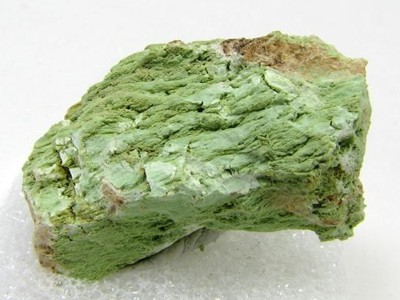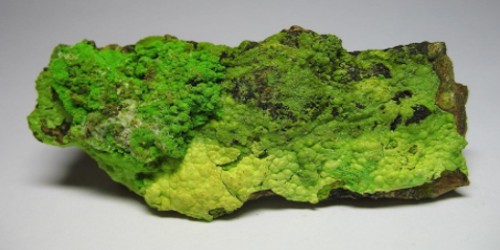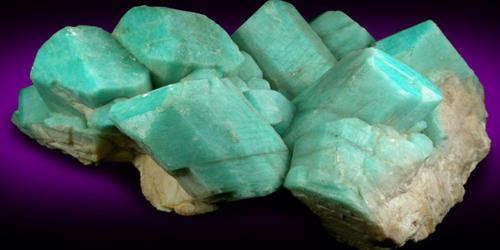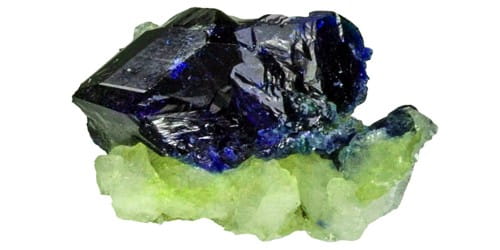Gaspéite, a very rare nickel carbonate mineral, with the formula (Ni, Fe, Mg)CO3, is named for the place it was first described, in the Gaspé Peninsula, Québec, Canada. It is found as a secondary mineral around nickel sulfide deposits. It is being used as a cabochon in sterling silver jewelry with such notable minerals and material as turquoise, malachite, azurite, onyx, and coral.
General Information
- Category: Carbonate mineral, anhydrous subgroup
- Formula: (Ni, Fe, Mg)CO
- Calcite group
- Crystal system: Trigonal
- Crystal class: Hexagonal scalenohedral (3m)

Fig: Gaspéite – rare nickel carbonate mineral
Properties
Gaspéite is the nickel-rich member of the calcite group. A solid solution series exists between all members of this group with divalent cations readily exchanged within the common crystal structure. It is also present as stains and patinas on iron oxide box works of gossanous material.
- Color: Pale green, light grass or apple green
- Crystal habit: Rhombic crystal aggregates, nodular concretions (botryoidal), massive
- Fracture: Uneven
- Mohs scale hardness: 4.5 – 5
- Luster: Vitreous to dull
- Streak: Yellow-green
- Diaphaneity: Translucent
- Specific gravity: 3.71
- Optical properties: Uniaxial (-)
Occurrence
Gaspéite is known from a handful of locations worldwide. Aside from its type locality in Canada, gaspéite is found in the nickeliferous gossans of Kambalda type komatiitic nickel ore deposits in Kambalda, and nearby Widgie Townsite, Widgiemooltha, both south of Kalgoorlie, Western Australia, in both locations also associated with garnierite and kambaldaite.
Gaspéite is reported from the Lord Brassey Mine, Tasmania, in association with hellyerite.
Uses
Gaspéite presence in the geologic environment may be used as an ore mining indicator of nickel-rich minerals nearby. Gaspéite stones are used for carving ornamental objects and animal figurines and are also cut and polished into attractive apple green color (often veined) cabochons for jewelry use.
Information Source:
















